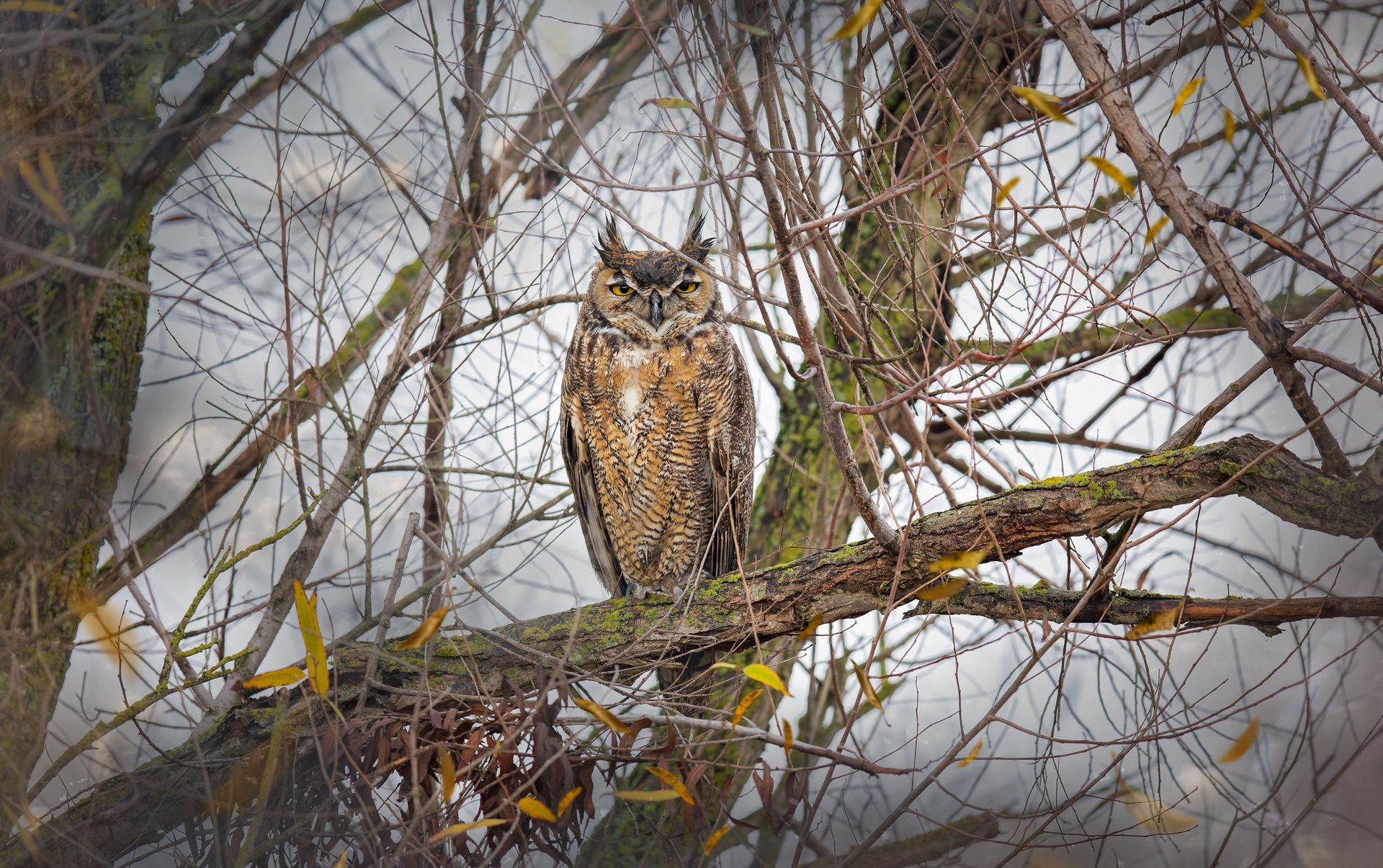Tuleyome's Science Corner - Great Horned Owl

Do you ever poke your head out during the cold winter nights and hear the deep hoot of a Great Horned Owl? Great Horned Owls begin nesting early, usually in December, which is why you may hear them talking on a cold winter night. Occasionally, I hear a pair chatting it up between the tops of the redwood trees across the street; and sometimes a third owl joins in from around the corner.
Great Horned Owls (Bubo virginianus) are sometimes called “Tiger Owls” because of their aggressive and powerful hunting skills. They have big yellow eyes, two feather tufts called “plumicorns” on the top of their round head, short wings and a mottled, striped breast. Their coloration varies from pale gray to a dark sooty color depending on where they are within their range. Their facial disk, which helps them locate prey by directing sound toward their ears, can vary from a reddish brown to gray but they all typically have a bright white patch on the front of their neck. Great Horned Owls cannot move their eyes within their sockets but they can rotate their heads almost 180 degrees allowing them to see in any direction. Females are typically larger in size than males but males have a bigger voice box which allows their hoots to be deeper and heard from a greater distance.
Great Horned Owls are found all throughout North America and occupy forests, swamps, deserts, agricultural and urban areas. Their home range usually includes forests or woodlands with trees for nesting and open areas such as wetlands, pastures or cropland for hunting. Although they are primarily nocturnal, Great Horned Owls have also been observed hunting during the day but this usually only occurs in the winter.
Typically, they hunt from a perch or but have also been observed walking on the ground to pursue prey items. Great Horned Owls have the most diverse diet of all North American raptors taking small species like scorpions and bats to porcupines (which can be fatal for both the owl and the porcupine), geese and other raptors. They eat mainly mammals but will also take fish, birds and reptiles and sometimes even carrion. Owls living in cold territory may allow excess food to freeze and then “incubate” it to thaw and be consumed later.
Great Horned Owls prefer large trees for nesting such as cottonwood and pines. They sometimes nest in cavities but prefer to reuse a sturdy stick nest previously constructed by other large birds such as crows, ravens or other raptors. They line the nest with leaves, down, fur and/or shredded bark. Mating occurs in late winter and mated pairs vigorously defend their nests and territory by hooting, hissing, bill-clapping, and other vocalizations. They may also display physical intimidation threats such as spreading their wings and striking with their feet. One to four eggs are laid in the nest and tended to primarily by the female. Incubation lasts for about a month and the young are fed by both parents for about a month and a half. Around about five weeks, the young may wander out of the nest and climb onto nearby branches. They can fly at roughly ten weeks but continue to be fed by the parents and remain with them for several months. After nesting season is over, the adults may remain within the territory but roost individually.
Great Horned Owl Facts:
- The oldest Great Horned Owl currently on record was at least 28 years old
- Great Horned Owls have extremely strong talons and when clenched, require nearly 30 pounds to open
- Great Horned Owls are fierce predators and American Crows may gather from near and far to harass one for hours
- Great Horned Owl populations remain relatively steady despite habitat loss, increases in rodenticide use and collisions with cars
-Kristie Ehrhardt (kehrhardt@tuleyome.org)
RECENT ARTICLES






